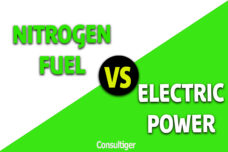As per the Cambridge Dictionary “Miniaturisation is the process of making something very small using modern technology”
We have seen silicon chip getting smaller and powerful. This is a good example of miniaturisation.
Miniaturisation trend
We are already seeing several electronic gadgets and equipments becoming not just smaller but also becoming powerful/feature rich. This trend can be seen in the following manufacturing industries: automobile, telecommunications, electronics,, medical devices, industrial equipment, etc.
The motivation to ‘miniaturise’ products are for the following benefits:
- Better handling – storage & transportation
- Higher product efficiency
- Lower cost of manufacturing
- Lower price
- Higher market share
To make your product smaller, you need to have access to small components – be it electrical, electronic or mechanical components. Miniaturisation of a product has to ensure that the power/features of the product in question are not compromised. And of course, as pointed out earlier (as a benefit) the cost of producing the product has to be kept low.
The challenge in miniaturisation is how much of it is possible. Small tools are required to make the product small while continuing to maintain high precision. Micro tools, as they are called, are manufactured using tungsten carbide as this materials has smooth finish and allows sharp cuts.
Let’s turn our attention to some ‘miniaturisation’ enablers in the electronics industry.
A) Electronic circuits manufacturing: The latest surface-mounted devices (SMDs) are of 20×10 mil form – i.e. 0.02 inch x 0.01 inch. These are very small components and therefore use up only 1/4th of the total printed circuit board area. This means that only 1/5th space of the earlier generation of SMD is used now.
B) Adhesives for SMDs: Soldering to mount the SMDs on PCB (printed circuit board) is now replaced with an adhesives technique. Of course, soldering using lead was also not a great environment-friendly means.
C) Chip Technology: Now we have technology that can operate CMOS ICs on lower voltages. This will further enable miniaturisation and at the same time extending the battery life despite smaller batteries.
D) Electroforming* Technique: Instead of the etching method for printed circuit board fabrication, a new process uses electroforming*. This method creates metallic traces on a PCB surface that allows for holes as small as 25 mm diameter holes or lines as wide as 10 mm on PCBs of even 12.5 mm. What this means is that there will be about 75% to 80% size reduction in companrison to PCBs created using etching method.
E) Cooling Strategies: With technology PCBs are getting smaller and more powerful. As a result, the boards can also get heated because of the load they are taking. However, cost-effective technologies that allow higher heat resistance and spot cooling of the PCBs are aiding miniaturisation.
* As per Wikipedia “Electroforming is a metal forming process that forms parts through electrodeposition on a model, known in the industry as a mandrel. Conductive (metallic) mandrels are passivated (chemically) to preclude ‘plating’ and thereby to allow subsequent separation of the finished electroform.”
Do you need help with ‘Miniaturising’ Your Product? Consultiger could be of help. Consultiger is an online platform for manufacturers to up their technical quotient by engaging knowledgeable/experienced experts.












